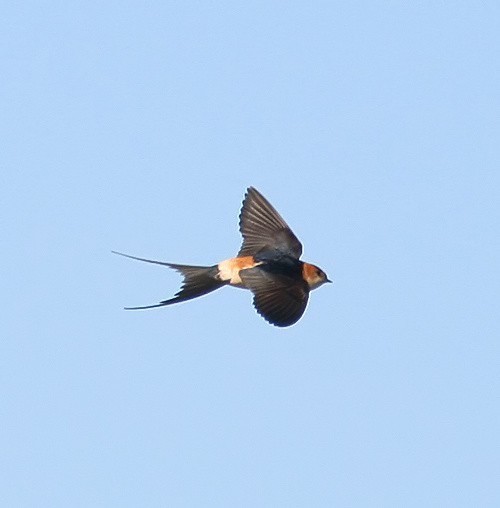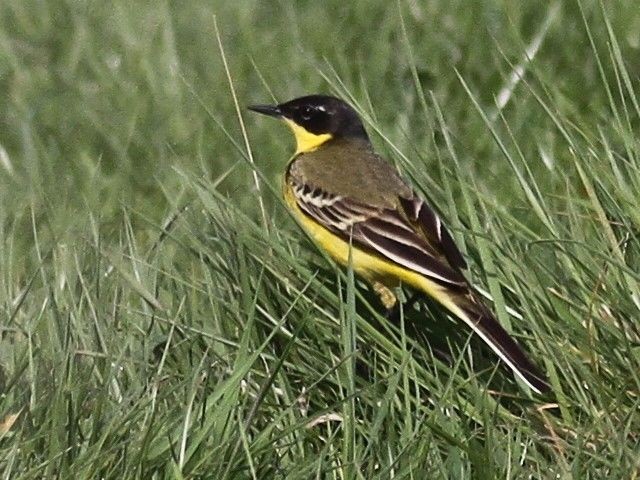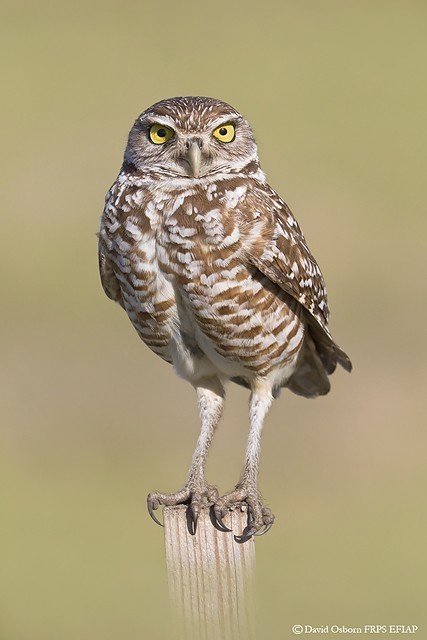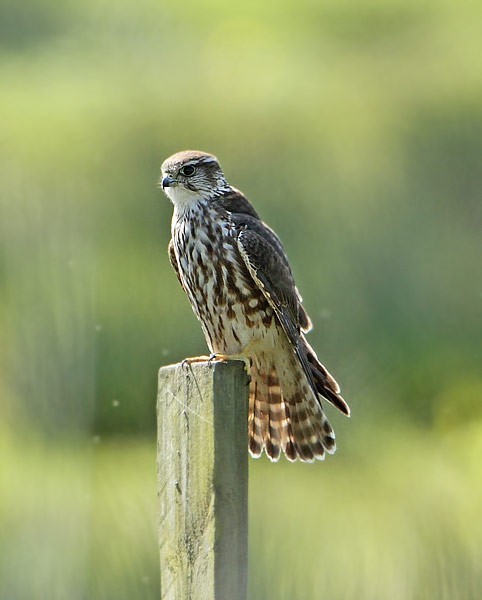The week at a glance
- Possible Moroccan Wagtail in Cornwall
- Calandra Lark in Lincolnshire
- Roller in County Wexford
There was lots more sunshine for many parts of the country, and the warmest days of the year so far made the main weather headlines this week. However some heavy showers 'down south' and snow on northern hills made it clear that the late-winter shackles hadn't been shaken off entirely. As the week drew to a close, though, the sun was out again and some areas were enjoying temperatures of 22°C or more.
Potentially the rarest bird of the week, by some way, was the possible Moroccan Wagtail seen near Land's End (Cornwall) for 30 minutes on 28th. Anyone who has travelled to North Africa and enjoyed watching this White Wagtail form subpersonata will know just how distinctive they can be. Hopefully this will prove to be a pure Moroccan and not an alba/subpersonata intergrade. If it does prove to be acceptable, it will mirror the April arrival, in 2005, of the Amur Wagtail in County Durham. Remarkably, an alba wagtail subspecies, seen at L'Eree on Guernsey on 22nd–23rd bore a slight resemblance to subpersonata with a striking head pattern that matches no other alba sub-species but was thought by the observer to perhaps be an odd first-summer male Pied Wagtail. Any pictures taken of the Cornish bird will be fascinating to compare with the Guernsey wagtail.
Before the arrival of a potential British first, the main headline maker was the Calandra Lark seen in flight, heading south, at Skegness (Lincolnshire) on the morning of 25th. This mega-lark is still a mega-tick for many. There are still only 15 accepted records on the books, but six of those have been seen since 2000, with six more dating from the period 1994–1999. A dozen accepted records in the space of the past 16 years is a significant improvement from the three found prior to that (in 1985 on Scilly, 1978 on Shetland and 1961, the first, in Dorset). If accepted, the Lincolnshire bird will be a county first and the seventh Calandra Lark seen in April in the UK.
In Ireland, a Roller was seen at Tacumshin (Co. Wexford) on 24th, still a huge rarity in the country. There are currently 13 accepted records, split across north and south, with Wexford leading the way with four. The last of those was in July 1990, and the only other since was one seen near the stunning Cliffs of Moher on the Connemara coast in August 2001. Before those two, you have to go back to July 1976, and a bird at Castlederg in County Tyrone that was present for almost a fortnight. Eight Irish records date from 1900 or earlier, so any sticking Roller will be warmly welcomed by the nation's birders.
On Shetland, a White-billed Diver was in Mousa Sound on 24th. The same day saw two birds noted from Port Skigersta, Lewis (Outer Hebrides) and one was again off Burghead (Moray), the latter still present on 27th. Around 70 Pomarine Skuas were noted during the week, mainly along the coast of the English Channel (including seven past Selsey Bill, in West Sussex, and eight from Dungeness, in Kent, on 28th). Two were also seen off Aberystwyth (Ceredigion) on 23rd, one was off Kilmore Quay (Co. Wexford) on 25th, six passed Bowness-on-Solway (Cumbria) on 26th and eight were seen from Mizen Head (Co. Cork) on 27th.
Only four Great White Egrets were seen this week (quite a drop from last week's dozen) with one remaining in Aberdeenshire (at Loch of Strathbeg) and others were in Hampshire, Norfolk and Northumberland. Around 35 Spoonbills were seen, with six (three groups of two) seen in County Cork, a similar number (perhaps a couple more) spread around Norfolk (including three over Cley on 28th) and groups of three lingering in Cornwall and Dorset.
Three Common Cranes were tracked from Norfolk to Yorkshire (possibly even Northumberland) and back between 22nd and 24th. They were first noted heading past the northeast corner of Salthouse Heath just before 11:00 on 22nd and they were then seen elsewhere along the county's north coast before appearing, late in the day, in Yorkshire. (Three birds thought to have perhaps been White Storks were seen in Northumberland on 23rd, but it's a reasonable bet that they could have been this travelling trio.) On 24th, the same threesome (one clearly larger than the other two) were noted at sites in East Yorkshire and Lincolnshire before hitting the Norfolk coast again, tracking east from Holme to Salthouse Heath between 14:45 and 16:10. Remarkably, the three Cranes that headed back west along the north Norfolk coast on 28th may well have been the same birds, wandering over the Wash once more, heading through Lincolnshire and East Yorkshire (reaching Hornsea Mere) as the day progressed. In the Norfolk Broads, several Cranes were noted through the week (a three and a four) while, elsewhere, singles were in Suffolk, County Durham, Aberdeenshire and Highland, while two were seen over Bough Beech Reservoir (Kent) on 27th.

Common Crane, Whitburn Coastal Park, Durham (Photo: Mark Newsome)
A Purple Heron flew over Porthgwarra (Cornwall) on 24th and two were reported over Romsey (Hampshire) on 25th. Four single birds were found on 27th, appearing at Stithians Reservoir (Cornwall), over Ottery St. Mary (Devon), Ham Wall (Somerset) and Dungeness. Up to seven White Storks were reported though the week, from West Sussex to Lancashire.
More exciting still, though, was the Black Stork seen at Blaxton and Lopwell Dam (Devon) on 26th–27th, which headed over the border into Cornwall on 28th, where it was seen over Landulph Marsh. It's a fitting way to celebrate the 25th anniversary of the species' first appearance in Devon, the much-twitched bird at Thurlestone and the River Erme from 27th April to 1st May 1985. Another Black Stork was also seen in the southwest on 27th, near Oareford (Somerset), the first in the county for nearly 17 years.
The second Spotted Crake of the month was found at Slimbridge (Gloucestershire) on 25th and the third was at Chasewater Reservoir (Staffordshire) on 28th.
A white Snow Goose was at Loch of Strathbeg on 22nd–27th and two were at Yesnaby (Orkney) on 27th. A Black Brant was still at Frampton Marsh (Lincolnshire) to 25th at least.
A drake Ring-necked Duck was on Inch Island Lake (Co. Donegal) this week (where it was paired to a Common Pochard), with another drake at Oxford Island on 25th (two birds were reported there later the same day). On Orkney, the female Ring-necked Duck was still on North Ronaldsay for the week, while in Somerset, the drake Ferruginous Duck remained at Chew Valley Lake to 25th.

Ring-necked Duck, Oxford Island NNR, Armagh (Photo: Mark Killops)
Three of the week's seven Green-winged Teal were new; two were found on 25th — at Ashton's Callow (Co. Tipperary) and Elmley Marshes (Kent) with the third new bird at Lerwick (Shetland) on 25th. Others remained at Kildrochat (Dumfries & Galloway), Wheldrake Ings (North Yorkshire), Eyebrook Reservoir (Leicestershire) and Marloes Mere (Pembrokeshire). The drake American Wigeon lingered at Saltholme Pools (Cleveland) until 25th.
A drake Surf Scoter was again off Ruddon's Point (Fife) on 24th, with two still in the Sound of Tarnasay (Outer Hebrides) to 25th, while in Aberdeenshire drake King Eiders were noted off Whinnyfold on 26th and in Cruden Bay on 27th.
A Black-winged Stilt was a nice find at Nosterfield LNR (North Yorkshire) on 25th, but departed after only 15 minutes or so. The next morning, it was seen in York but was back at Nosterfield (at the quarry this time) later the same day. Further north, at Caerlaverock (Dumfries & Galloway), a Long-billed Dowitcher was found on 28th.
A Pectoral Sandpiper was a brief visitor to Trimley Marshes (Suffolk) on 27th, while the same date saw a possible Hudsonian Whimbrel reported from Pegwell Bay (Kent). A female Kentish Plover was at Dawlish Warren (Devon) from 23rd–26th and another female was on the beach at Heacham (Norfolk) on 28th. The same date produced the first Temminck's Stint of the spring, at Gibraltar Point (Lincolnshire).
Some 55 Dotterel included a trip of 12 near Upavon (Wiltshire) on 26th and groups of nine at Tetney Lock (Lincolnshire) on 26th and Preston Candover (Hampshire) on 27th. Back in Lincolnshire, five were at North Cotes on 28th, while four were at Pen-y-Fan (Powys) on 24th (with three more in the county, at Glaslyn on 27th) and threes were at Tealham Moor (Somerset) on 25th and Abbeystead (Lancashire) on 26th. In Ireland, Galway's second or third Dotterel was at Aillebrack from 23rd–26th.

Dotterel, Aillebrack, Galway (Photo: Dermot Breen)
A white Gyrfalcon was at Eoropie, Lewis (Outer Hebrides) on 25th while a tame white Gyr without jesses was reported on the campus grass of Stirling University (Forth) on 26th–27th. A grey Gyrfalcon was also reported at Trimley (Suffolk) on 27th. A Rough-legged Buzzard was over the Blyth Estuary (Suffolk) on 22nd. The tagged first-year White-tailed Eagle was still on Fair Isle on 22nd, with one (probably the same one) over Sandwick, Shetland on 24th.
The adult summer Bonaparte's Gull was at Arlington Reservoir (East Sussex) until 22nd, while Ring-billed Gulls included two in County Cork (an adult at Bantry, a first-winter at Timoleague), two in Cornwall (first year birds at Padstow and the Hayle Estuary) and an adult in County Down (at Quoile Pondage). Iceland Gulls could muster just six birds this week compared to perhaps seven Glaucous Gulls (with up to four, all juveniles, on the Outer Hebrides).

Bonaparte's Gull, Arlington Reservoir, East Sussex (Photo: Dorian Mason)
A Gull-billed Tern was found at Moss, on Tiree (Argyll) on 25th, the second for the island, following a photographed bird at Crossapol in September and October 2008. In Cornwall, the handsome Whiskered Tern remained along the Camel Estuary until 23rd, and in County Galway the Forster's Tern was seen again off Mutton Island, in Galway City, on 23rd.
One of the week's most popular birds has been the singing male White-spotted Bluethroat at Welney (Norfolk). Found on 23rd, the bird remained until 29th, showing well from time to time, to the delight of its many admirers. A Bee-eater at Botallack (Cornwall) on 23rd was presumably the same bird that pitched up the following day at Land's End (where it performed well enough for some super snapshots to be rattled off, before departing out to sea). Two birds were found on Mull (Argyll) on 24th, remaining to 26th and one flew over Tresco (Scilly) on 27th. A "heard only" Bee-eater was reported from Cromer and Sheringham (Norfolk) on 25th.

Bluethroat, Welney WWT, Norfolk (Photo: Lee Johnson)

European Bee-eater, Land's End, Cornwall (Photo: Samuel Williams)
Further bursts of avian April sunshine came with seven Red-rumped Swallows. One at Minster, near Ramsgate (Kent) on 22nd had actually appeared the previous day, but remained to 23rd, when another was seen at Landkey (Devon). On 24th, one made it to Cape Clear Island (Co. Cork), with another Cork record coming the following day at Old Head of Kinsale. Further singles were at Leasowe (Cheshire) on 25th, Gibraltar Point (Lincolnshire) on 26th and Samphire Hoe CP (Kent) on 27th. There was only one Alpine Swift to report this week, seen over Trimley Marshes on 27th.

Red-rumped Swallow, Minster nr Ramsgate, Kent (Photo: Marc Heath)
Back on Cape Clear, a Hoopoe and a Wryneck were seen on 22nd, with six more of the former species noted — one remained on Skomer (Pembrokeshire) all week, with others in West Sussex, Hampshire and Norfolk (three birds in the north of the county). Cork laid claim to one of three Wrynecks this week, at Toe Head on 22nd with the others arriving at Canvey Island (Essex) and Bilston Wood (Lothian) on 28th. Back in Cork, a Golden Oriole was seen briefly at Skibbereen on 24th. Further Golden Orioles were at Pegwell Bay on 25th, Humberstone Fitties (Lincolnshire) and, back on familiar territory, at Lakenheath Fen (Norfolk/Suffolk) on 28th.

Wryneck, Loanhead, Lothian (Photo: Bruce Kerr)
After last week's double of both Spanish Wagtail and Black-headed Wagtail, this week saw the appearance of a male Ashy-headed Wagtail at Brockholes Wetland NR (Lancashire) on 22nd–23rd. In Cleveland, a male Black-headed Wagtail-type was discovered at Saltholme Pools (Cleveland) on 28th and was the cause of some discussion throughout the rest of the day. Photos appear to show a contrasting, very dark grey nape, and subtly darker ear-coverts, and Black-headed × Grey-headed Wagtail was one suggestion. The pale throat and broken, indistinct supercilia bore a passing resemblance to the recent Northumberland feldegg, but whatever the Cleveland bird proves to be, it's a stunner!

Black-headed Wagtail, Saltholme RSPB, Cleveland (Photo: Ian Forrest)
The rush of scarce migrants in County Cork continued with a Tawny Pipit flying over Ballycotton on 23rd, and the second of the week was near Waxham (Norfolk) on 28th. Another brief visitor was the Richard's Pipit reported at Chamber's Wall (Kent) on 26th. A second Richard's Pipit was on the cliffs at Sidestrand (Norfolk) on 27th with the same date seeing the arrival of the first Short-toed Lark of the spring, on Gugh (Scilly).
A cracking male Subalpine Warbler was singing at Hengistbury Head (Dorset) on 24th–25th while a female was found at Land's End on 26th.

Subalpine Warbler, Hengistbury Head, Dorset (Photo: Peter Moore)
Seven Woodchat Shrikes included one in (no real surprises here) County Cork — one found at Mizen Head on 22nd, and still present on 28th. In Wexford, a Woodchat was at Churchtown on 24th (moving to Carnsore Point on 25th), while the far southwest of England saw single birds appear on St. Agnes (Scilly) on 24th and at Nanquidno (Cornwall) on 25th. As the week drew to a close, new birds were found on 28th at Winterton Dunes (Norfolk) and Bass Point (Cornwall). Last week's bird at Minehead (Somerset) remained to 22nd.

Woodchat Shrike, Churchtown, nr Rosslare, Wexford (Photo: Paul Kelly)
In Essex an early Red-backed Shrike, a male, was reported from Buttsbury Wash near Stock on 25th–26th. In Lincolnshire, the Great Grey Shrike remained at Tetney Lock to 23rd.
An adult Rose-coloured Starling was at St. David's (Pembrokeshire) on 28th. The probable Arctic Redpoll was again at Evie (Orkney) on 22nd, while Portland in Dorset rattled in three Serin records this week, on 23rd, 24th and 26th. In Suffolk, a Serin was at Landguard on 28th and another was also seen at Pleinmont on Guernsey on 24th.
Photo of the Week

Shelduck, Minsmere RSPB, Suffolk (Photo:
Richard Bedford)
The RSPB's Minsmere reserve in Suffolk is one of the most productive locations for bird photography, offering a mouthwatering list of 'star species' including Bittern, Marsh Harrier, Bearded Tit and Nightingale. As Richard Bedford illustrates, though, even if you're visiting a site with the star species in mind, it's always good to keep a lookout for great photo opportunities involving other species. This week, Richard spotted the action as a mid-air altercation took place between a pair of Shelducks. Freezing the action with a fast shutter speed, Richard captured an image that takes a while to fully appreciate. It doesn't take long to notice that the birds are plummeting almost vertically towards the ground, with their bodies twisted into extreme poses. Also, due to the emphasis provided by its central placement, it quickly becomes apparent that the upper bird has the other's tail locked in its bill. Having recognised the dynamic quality of the image, though, there's still plenty to discover about the way the shapes, lines, colours and tones provide symmetry and complementarity. An excellent all-round composition that also perfectly sums up an action-packed moment.

Blackcap, Thurstaston, Cheshire (Photo:
Steve Round)

Sand Martin, undisclosed site, Hampshire (Photo:
Richard Steel)

Great Black-backed Gull, Peel, Isle of Man (Photo:
Sean Gray)

Red Kite, undisclosed site, Powys (Photo:
Kev Joynes)

Dipper, undisclosed site, Derbyshire (Photo:
Robert Askew)

Cuckoo, Brecon, Powys (Photo:
Steve Wilce)

Pallid Harrier, Qatar (Photo:
John A Thompson)

European Bee-eater, Spain (Photo:
Steve Fletcher)

Burrowing Owl, United States (Photo:
David Osborn)

Wren, private site, Norfolk (Photo:
David Whistlecraft)

Puffin, Skomer, Pembrokeshire (Photo:
Jon Evans)

Common Kestrel, undisclosed site, Bedfordshire (Photo:
Neill Carden)

Northern Wheatear, Toft Newton Reservoir, Lincolnshire (Photo:
Matt Latham)

Black Redstart, Turkey (Asian) (Photo:
Kemal Kahraman)

Pheasant, East Walton, Norfolk (Photo:
Stephen Durrant)

Swallow, Minsmere RSPB, Suffolk (Photo:
Chris Darby)

Common Whitethroat, Minsmere RSPB, Suffolk (Photo:
Ian Curran)

Merlin, Greylake RSPB, Somerset & Bristol (Photo:
Gary Thoburn)

Herring Gull, North Berwick, Lothian (Photo:
David Cookson)

Barn Owl, Prestwick Carr, Northumberland (Photo:
Keith Cochrane)

